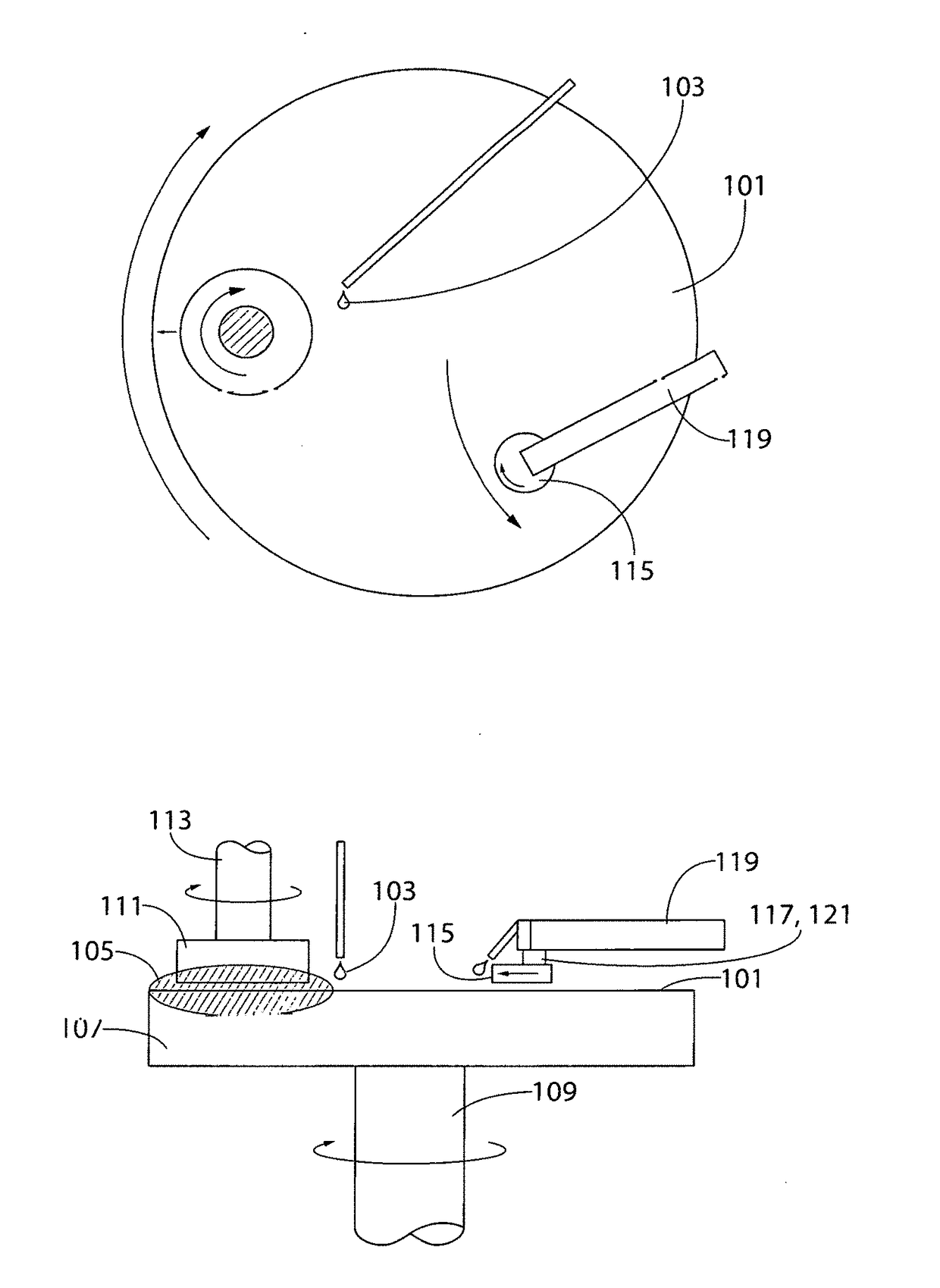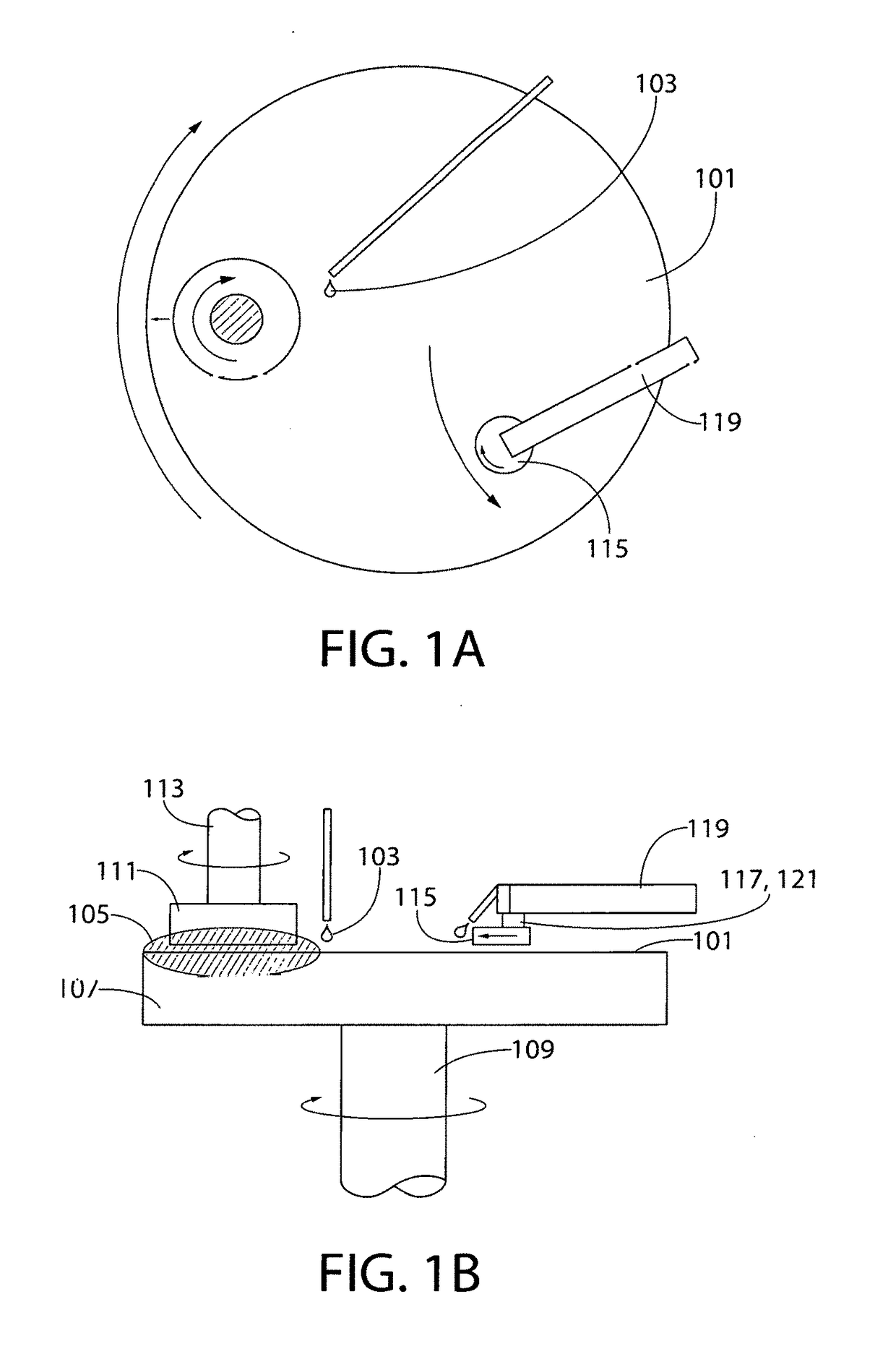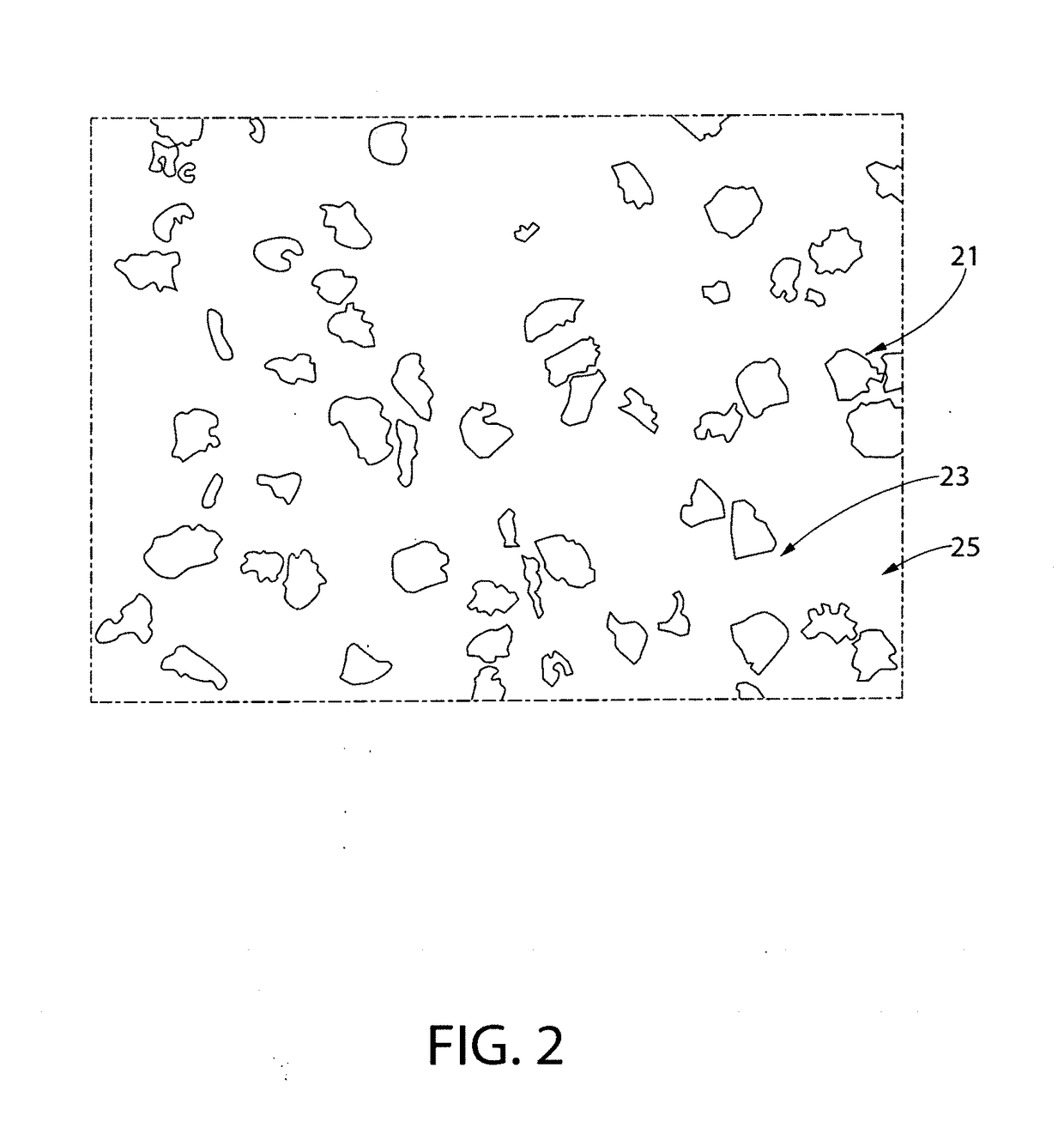Diamond Composite CMP Pad Conditioner
a technology of composite diamonds and conditioners, which is applied in the field of diamond-containing discs, can solve the problems of diamond particle spalling or popping out of the matrix, thick and rough si wafers, and loss of effectiveness, and achieves high mechanical and thermal stability
- Summary
- Abstract
- Description
- Claims
- Application Information
AI Technical Summary
Benefits of technology
Problems solved by technology
Method used
Image
Examples
example 1
EDM Method
[0038]In this Example, made with reference to FIGS. 5A and 5B, a diamond-reinforced reaction-bonded silicon carbide composite is produced initially by conventional methods, but then is further processed by electrical discharge machining to yield the diamonds protruding form the surface.
[0039]Here, the low diamond content (10-20%) is chosen to produce the required spacing of the diamond 51 within the Si / SiC matrix. Next, the EDM electrode 55 is placed adjacent the surface to be machined 57. Carrying out EDM preferentially removes the Si / SiC matrix phases from one surface of the disk (the surface adjacent the EDM electrode), leaving behind protruding diamond 52 on the now-recessed surface 54.
example 2
Casting Method Without Intentional Segregation
[0040]In this method, which is described with reference to FIGS. 6A and 6B, diamond particles or bodies are placed on the bottom of a casting mold, and a preform is cast on top of, and embedding, the diamond bodies.
[0041]First, a casting slip 65 is prepared. The slip contains the usual constituents for making a RBSC perform, but does not contain diamonds. Next, a casting mold 61 is prepared. Here, the mold is shaped to yield a disc-shaped perform. Large diamond particles 63 (e.g. 200 microns diameter) are then placed or positioned in a defined pattern (square, hexagonal etc.) at the bottom of the casting mold. Then, the non-diamond containing slip 65 is cast into the mold. The remaining process steps for making a RBSC body containing diamond on the surface (sedimentation, excess binder removal, demolding, drying, carbonizing and reaction bonding) are then carried out.
[0042]Finally, polishing is conducted on the diamond-containing surface...
example 3
Casting Method With Intentional Segregation
[0043]In this method, which is described with reference to FIGS. 7A and 7B, the diamond particles, which are larger in diameter and denser than SiC particles, are allowed to segregate during the sedimentation process to yield a functionally gradient perform: the concentration of diamond on the bottom of the casting will be greater than on the top of the casting.
[0044]First, a casting slip 73 is prepared containing small amount (5-10%) of coarse diamond 75 (e.g. 200 microns). This slip is intentionally made more dilute to promote faster settling of diamond particles compared to SiC particles. The slip is then cast into a mold 71 to prepare a disc-shaped perform. Next, vibration is applied to the casting mold to intentionally preferentially settle the diamond 75 to the bottom of the mold. Settling of the particles in the casting slip is governed by Stoke's Law:
Vs=[2(ρp−ρf) g R2] / 9 μ
[0045]Here, Vs is the settling velocity, ρ is the density, su...
PUM
| Property | Measurement | Unit |
|---|---|---|
| size | aaaaa | aaaaa |
| diameter | aaaaa | aaaaa |
| diameter | aaaaa | aaaaa |
Abstract
Description
Claims
Application Information
 Login to View More
Login to View More - R&D
- Intellectual Property
- Life Sciences
- Materials
- Tech Scout
- Unparalleled Data Quality
- Higher Quality Content
- 60% Fewer Hallucinations
Browse by: Latest US Patents, China's latest patents, Technical Efficacy Thesaurus, Application Domain, Technology Topic, Popular Technical Reports.
© 2025 PatSnap. All rights reserved.Legal|Privacy policy|Modern Slavery Act Transparency Statement|Sitemap|About US| Contact US: help@patsnap.com



